- Home
- Graham Hancock
Entangled
Entangled Read online
GRAHAM HANCOCK
Entangled
CENTURY • LONDON
Contents
Cover
Title
Copyright
Dedication
Also by Graham Hancock
Acknowledgements
Part I
Chapter One
Chapter Two
Chapter Three
Chapter Four
Chapter Five
Chapter Six
Chapter Seven
Chapter Eight
Chapter Nine
Chapter Ten
Chapter Eleven
Chapter Twelve
Chapter Thirteen
Chapter Fourteen
Chapter Fifteen
Chapter Sixteen
Chapter Seventeen
Chapter Eighteen
Chapter Nineteen
Chapter Twenty
Chapter Twenty-One
Chapter Twenty-Two
Chapter Twenty-Three
Chapter Twenty-Four
Chapter Twenty-Five
Chapter Twenty-Six
Chapter Twenty-Seven
Part II
Chapter Twenty-Eight
Chapter Twenty-Nine
Chapter Thirty
Chapter Thirty-One
Chapter Thirty-Two
Chapter Thirty-Three
Chapter Thirty-Four
Chapter Thirty-Five
Chapter Thirty-Six
Chapter Thirty-Seven
Chapter Thirty-Eight
Chapter Thirty-Nine
Chapter Forty
Chapter Forty-One
Chapter Forty-Two
Chapter Forty-Three
Chapter Forty-Four
Chapter Forty-Five
Chapter Forty-Six
Chapter Forty-Seven
Chapter Forty-Eight
Chapter Forty-Nine
Chapter Fifty
Chapter Fifty-One
Chapter Fifty-Two
Chapter Fifty-Three
Chapter Fifty-Four
Chapter Fifty-Five
Chapter Fifty-Six
Chapter Fifty-Seven
Chapter Fifty-Eight
Chapter Fifty-Nine
Chapter Sixty
Chapter Sixty-One
Chapter Sixty-Two
Chapter Sixty-Three
Part III
Chapter Sixty-Four
Chapter Sixty-Five
Chapter Sixty-Six
Chapter Sixty-Seven
Chapter Sixty-Eight
Chapter Sixty-Nine
Chapter Seventy
Chapter Seventy-One
Chapter Seventy-Two
Chapter Seventy-Three
Chapter Seventy-Four
Chapter Seventy-Five
Chapter Seventy-Six
Chapter Seventy-Seven
Chapter Seventy-Eight
Chapter Seventy-Nine
Chapter Eighty
Chapter Eighty-One
Chapter Eighty-Two
Chapter Eighty-Three
Chapter Eighty-Four
Chapter Eighty-Five
Chapter Eighty-Six
Chapter Eighty-Seven
Chapter Eighty-Eight
Chapter Eighty-Nine
Chapter Ninety
Chapter Ninety-One
Chapter Ninety-Two
Chapter Ninety-Three
Chapter Ninety-Four
Chapter Ninety-Five
Chapter Ninety-Six
Chapter Ninety-Seven
Chapter Ninety-Eight
Chapter Ninety-Nine
This eBook is copyright material and must not be copied, reproduced, transferred, distributed, leased, licensed or publicly performed or used in any way except as specifically permitted in writing by the publishers, as allowed under the terms and conditions under which it was purchased or as strictly permitted by applicable copyright law. Any unauthorised distribution or use of this text may be a direct infringement of the author’s and publisher’s rights and those responsible may be liable in law accordingly.
Version 1.0
Epub ISBN 9781409099802
www.randomhouse.co.uk
Published by Century 2010
2 4 6 8 10 9 7 5 3 1
Copyright © Graham Hancock
Graham Hancock has asserted his right under the Copyright, Designs and Patents Act 1988 to be identified as the author of this work
This novel is a work of fiction. Names, characters, places and incidents are the product of the author’s imagination or are used fictitiously. Any resemblance to actual persons, living or dead, events or locales is entirely coincidental
This book is sold subject to the condition that it shall not, by way of trade or otherwise, be lent, resold, hired out, or otherwise circulated without the publisher’s prior consent in any form of binding or cover other than that in which it is published and without a similar condition, including this condition, being imposed on the subsequent purchaser
First published in Great Britain in 2010 by Century Random House, 20 Vauxhall Bridge Road, London SW1V 2SA
Addresses for companies within The Random House Group Limited can be found at:
www.randomhouse.co.uk
The Random House Group Limited Reg. No. 954009
A CIP catalogue record for this book is available from the British Library
ISBN 9781846055539
The Random House Group Limited supports The Forest Stewardship Council (FSC), the leading international forest certification organisation. All our titles that are printed on Greenpeace approved FSC certified paper carry the FSC logo. Our paper procurement policy can be found at www.rbooks.co.uk/environment
Typeset in Bell MT by Palimpsest Book Production Ltd, Grangemouth, Stirlingshire
Printed and bound in Great Britain by Clays Ltd, St Ives plc
For Santha, always, forever, my light, my inspiration, my love, my hope. Without you there would be no words here.
Also By Graham Hancock
The Sign and the Seal
Fingerprints of the Gods
Keeper of Genesis (with Robert Bauval)
The Mars Mystery (with Robert Bauval)
Heaven’s Mirror (with Santha Faiia)
Underworld: The Mysterious Origins of Civilisation
Talisman: The Sacred Cities and the Secret Faith (with Robert Bauval)
Lords of Poverty
Supernatural
website: www.grahamhancock.com
Acknowledgements
I’d like to thank my wife Santha for her long hours of reading and commenting on the manuscript of Entangled as it has evolved over three years, and for her many inspired suggestions, but most of all for giving me the moral support and encouragement to attempt it in the first place. She was with me every step of the way as we researched the background in the US, northern Spain and the Amazon jungle, and has watched over me on some difficult inner journeys.
Thanks also for the encouragement and enthusiasm of our children, Sean, Shanti, Ravi, Leila, Luke and Gabrielle, who all followed the development of the story from its earliest chapters and were a mine of information and good ideas. Thanks to my mother Muriel Hancock, and uncle James Macaulay, for their readings and suggestions, and to Debbie and Rodney, Jan, Elizabeth, Mark and Adrienne, who were kind enough to comment on various drafts of the manuscript.
Very special thanks indeed go to Mark Booth my brilliant editor, who championed Entangled and gave it light when it was still less than a hundred pages long and who helped me in so many ways to bring out the best in the book at every stage in its creation. I several times found that suggestions Mark had made, which at first seemed to involve only small changes on one or two pages, went to the hear
t of some deeper problem that might require me to rework dozens of other pages. The end result was always hugely beneficial to the story.
After Mark’s departure from Century, Kate Elton took over as my editor and did an outstanding job of publishing the book, for which I’m very grateful. Thanks too to Katie Duce for coordinating design, production and proofs so efficiently.
There is a considerable research background to Entangled in fields as diverse as neuropsychology, consciousness, quantum physics, shamanism and palaeoanthropology. I have drawn on this background at a number of points but I make no claim to factual accuracy. Entangled is a work of fiction – indeed of fantasy – and I have never hesitated to depart from the facts when that was what the story required.
Amongst scientific researchers whose work I have studied I want to give special thanks to Rick Strassman, MD, Clinical Associate Professor of Psychiatry at the University of New Mexico School of Medicine. Rick’s groundbreaking research with DMT and human volunteers does not provide a model for the DMT research project described in these pages (which I fictitiously located at UC Irvine); however it does show that such a research project is possible. Moreover, Rick’s utterly stunning and disturbing findings, published in his book DMT: The Spirit Molecule (Park Street Press, Rochester, Vermont, 2001) provide strong scientific support for the central proposition of Entangled – namely that non-ordinary levels of reality, including freestanding parallel worlds, may become accessible to us in altered stated of consciousness.
Rick kindly read Entangled in manuscript and gave me his comments. I’m very grateful. Thanks also to Luis Eduardo Luna, Ph.D and Ede Frecska, MD, for their readings and comments, and to all at Wasiwaska in Brazil who sat round with me and gave me encouragement and feedback during evenings in 2007 and 2008 when I read aloud from the evolving manuscript of Entangled.
Needless to say none of the individuals named above, whose advice I some- times ignored, are responsible for any of the faults or errors of the book which are entirely my own doing.
I will close by expressing my gratitude and respect to sacred Ayahuasca, the visionary brew of the Amazon, which plays a part in Entangled. Ayahuasca (‘the Vine of Souls’) has been used by shamans for thousands of years to make out-of-body journeys to what they believe are the realms of spirits. Unexpectedly, some Western scientists who have drunk Ayahuasca themselves (rather than simply read about it) are inclined to agree. They speak not of spirit worlds but of a secret doorway in our minds that Ayahuasca can open, through which we may project our consciousness into parallel realms or dimensions.
I first drank Ayahuasca in 2003 while researching my non-fiction book Supernatural, and I have continued to work with the brew ever since. In 2006, during a series of sessions in Brazil, in a ceremonial space overlooked by an image of a blue goddess, my visions brought me the basic characters, dilemmas and plot of the novel that would become Entangled.
I felt I had been set an assignment – and this is not unusual, for it is often said by shamans and Western researchers alike that Ayahuasca is a school. Three years of hard work followed, and the result I now set before the reader.
Graham Hancock
Bath, England, January 2010
www.grahamhancock.com
This web of time – the strands of which approach one another, bifurcate, intersect, or ignore each other through the centuries – embraces every possibility. We do not exist in most of them. In some you exist and not I, while in others I do, and you do not, and in yet others both of us exist. In this one, in which chance has favoured me, you have come to my gate. In another, you, crossing the garden, have found me dead. In yet another, I say these very same words but am an error, a phantom … Time is forever dividing itself toward innumerable futures …
Jorge Luis Borges, Ficciones
Note on characters and plot: Set in parallel in the twenty-first century and the Stone Age, Entangled tells the story of a cosmic conflict between good and evil fought out on the human plane. The heroes are exceptional young women, but by no means too young for the adventure in which they find themselves swept up. Both Joan of Arc (who was also guided by voices) and Alexander the Great had led troops into battle and won stunning military victories by the age of seventeen.
Note on Stone Age setting: The archaic human species known as the Neanderthals lived on in Spain alongside anatomically modern humans – our own direct forebears – until as recently as 24,000 years ago. Soon afterwards the Neanderthals (who are the model for ‘the Uglies’ in Entangled) became extinct. Archaeologists suspect it may be the first example of ethnic cleansing in history.
Note on modern setting: Where modern locations such as the city of Los Angeles, the city of Iquitos, the UCLA Medical Center, the UC Irvine School of Medicine, etc, etc, are mentioned they are used entirely fictitiously. Their geography and physical layout as described may vary from reality since they are intended to be understood as the fantastic counterparts of these locations, in what is effectively a parallel realm, and not as the locations themselves. In particular it should be emphasised that no scientific study using dimethyltryptamine (DMT) and human volunteers has ever been conducted at UC Irvine School of Medicine. Such a study was, however, conducted in the 1990s at the University of New Mexico’s School of Medicine. The research was led by Associate Professor of Psychiatry, Dr Rick Strassman. His remarkable findings are set out in his book DMT: The Spirit Molecule (Park Street Press, Rochester, Vermont, 2001).
Note on dialogue: We can’t know how people spoke 24,000 years ago. But whatever their style of speech it is a reasonable supposition that it could be translated into the idiom of any other time and place – just as Ancient Egyptian hieroglyphs can be translated into modern English, and Classical Greek into modern Japanese. Indeed, rendering the idiom of one culture into the idiom of another is an important part of the translator’s job. Rather than contrive a ‘Stone Age’ style of speech for my characters of 24,000 years ago, I have generally expressed their dialogue in the modern idiom. The exception is the thought-talk of the Uglies which I represent in pidgin in the early parts of the book. As I conceive them, these are telepathic creatures forced to compress the complex multi-layered imagery with which they normally communicate into the narrow boundaries of another species’ language – so it’s reasonable, I think, that they would express themselves in a clumsy way. Later, when Ria receives the magical gift of languages, she is able to understand the Uglies perfectly and their speech is thereafter no longer rendered in pidgin.
Part I
Chapter One
Northern Spain 24,000 years ago, late summer
Ria was stalking a plump rabbit halfway up the side of a winding valley bright with pink saxifrage and thyme, coarse grasses and patches of yellow gorse. She kept low, crawling on her belly as she got closer, until she was in range. Then, stone in hand, her right arm already drawn back, she rose to a crouch and let fly – only to see her target bolt, startled by the sounds of shouts and loud whoops.
Who the fuck had spoiled her shot? She whirled in the direction of the noise, shading her eyes against the morning sun, and spotted a young Ugly male with a gimpy leg hopping and stumbling in terror along the valley floor a few hundred paces below and behind her. He was pursued by Grigo, Duma and Vik, youths of her Clan. Bellowing at the tops of their voices, waving stout wooden clubs, their bloodlust was up and Ria saw they meant to kill the helpless subhuman. On a whim, mainly because she disliked Grigo so much, she decided to stop them.
The winter before, Grigo’s overbearing father Murgh had approached her brothers Hond and Rill and proposed she should marry his son. She would rather marry a head louse so she had refused. Hond and Rill, who loved and adored their younger sister, had supported her decision. But there had been bad feeling between the two families ever since and Grigo had found countless ways to annoy and offend her.
Now it was payback time.
The valley side was steep and strewn with boulders, but Ria ran down it with sure
feet and soon the distance closed to two hundred and then just a hundred paces. Although they were charging straight towards her, neither the fugitive – intent on avoiding pitfalls at his feet – nor any of his pursuers – intent on murder – seemed to have seen her yet.
Grigo, tall and raw-boned, his lumpy features contorted with malice, was leading the pack. At seventeen he was a year older than Ria, but age-mates with Duma and Vik who looked up to him with such subservience it made her want to vomit. Vik was the fat boy of the gang. His body juddered like a big slab of seal blubber as he pounded along twenty paces behind Grigo. Then came Duma, last as ever, his spindly legs pumping under his scrawny buttocks, his flat unpleasant face covered in ripe pustules, and a look of fanatical stupidity in his eyes.

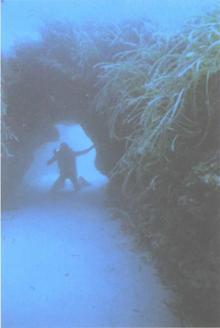 Underworld: The Mysterious Origins of Civilization
Underworld: The Mysterious Origins of Civilization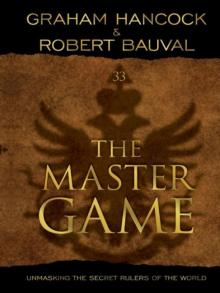 The Master Game: Unmasking the Secret Rulers of the World
The Master Game: Unmasking the Secret Rulers of the World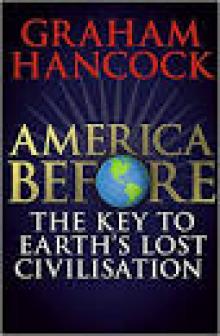 America Before
America Before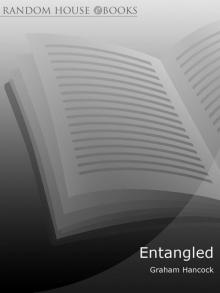 Entangled
Entangled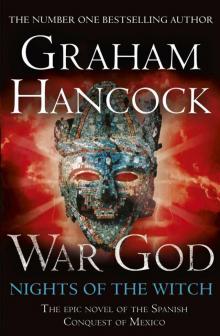 War God: Nights of the Witch
War God: Nights of the Witch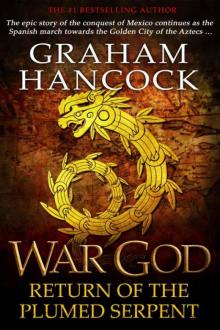 War God: Return of the Plumed Serpent
War God: Return of the Plumed Serpent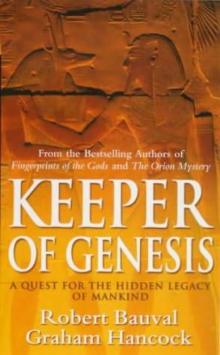 The Message of the Sphinx AKA Keeper of Genesis
The Message of the Sphinx AKA Keeper of Genesis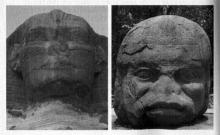 Fingerprints of the Gods
Fingerprints of the Gods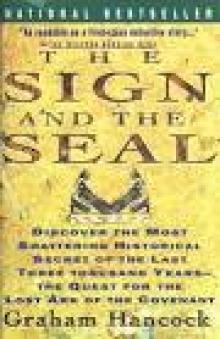 The Sign and the Seal
The Sign and the Seal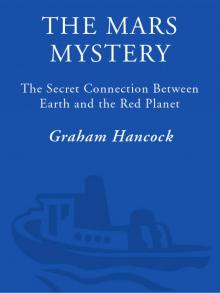 The Mars Mystery: The Secret Connection Between Earth and the Red Planet
The Mars Mystery: The Secret Connection Between Earth and the Red Planet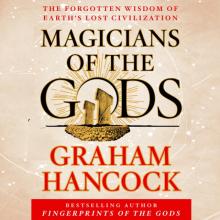 Magicians of the Gods: The Forgotten Wisdom of Earth's Lost Civilization
Magicians of the Gods: The Forgotten Wisdom of Earth's Lost Civilization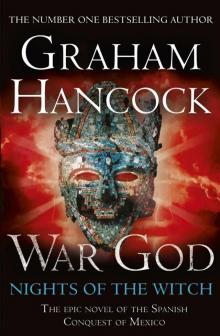 War God
War God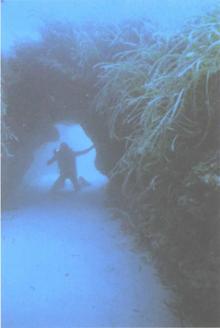 Underworld
Underworld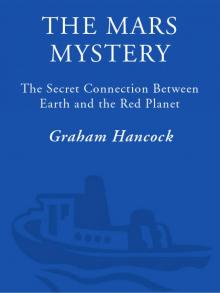 The Mars Mystery
The Mars Mystery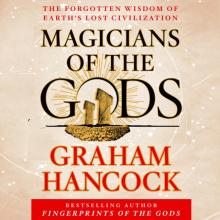 Magicians of the Gods
Magicians of the Gods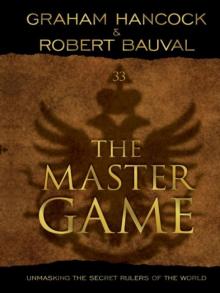 The Master Game
The Master Game